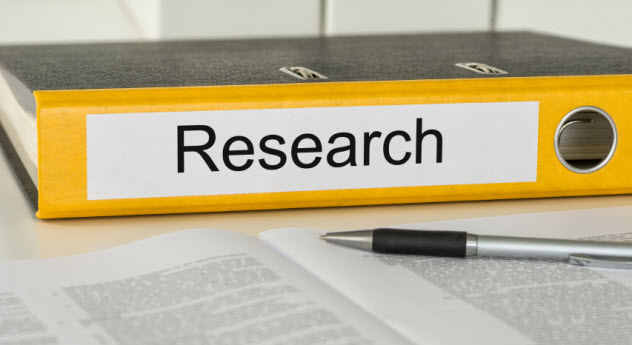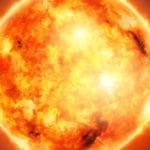 Animals
Animals  Animals
Animals  Weird Stuff
Weird Stuff 10 Weird Things People Used to Do at New Year’s
 Our World
Our World 10 Archaeological Discoveries of 2025 That Refined History
 Weird Stuff
Weird Stuff 10 Fascinating Facts You Might Not Know About Snow
 Miscellaneous
Miscellaneous Top 10 Things Crypto Was Supposed to Change & What Actually Did
 History
History 10 Huge Historical Events That Happened on Christmas Eve
 Music
Music 10 Surprising Origin Stories of Your Favorite Holiday Songs
 History
History 10 Less Than Jolly Events That Occurred on December 25
 Weird Stuff
Weird Stuff 10 Funny Ways That Researchers Overthink Christmas
 Politics
Politics 10 Political Scandals That Sent Crowds Into the Streets
 Animals
Animals 10 Species That Refused to Go Extinct
 Weird Stuff
Weird Stuff 10 Weird Things People Used to Do at New Year’s
 Our World
Our World 10 Archaeological Discoveries of 2025 That Refined History
Who's Behind Listverse?

Jamie Frater
Head Editor
Jamie founded Listverse due to an insatiable desire to share fascinating, obscure, and bizarre facts. He has been a guest speaker on numerous national radio and television stations and is a five time published author.
More About Us Weird Stuff
Weird Stuff 10 Fascinating Facts You Might Not Know About Snow
 Miscellaneous
Miscellaneous Top 10 Things Crypto Was Supposed to Change & What Actually Did
 History
History 10 Huge Historical Events That Happened on Christmas Eve
 Music
Music 10 Surprising Origin Stories of Your Favorite Holiday Songs
 History
History 10 Less Than Jolly Events That Occurred on December 25
 Weird Stuff
Weird Stuff 10 Funny Ways That Researchers Overthink Christmas
 Politics
Politics 10 Political Scandals That Sent Crowds Into the Streets
10 Disgraced Scientists Who Presented Fiction As Fact
The scientific world can be an exciting place where researchers always seem on the verge of a groundbreaking discovery. Regardless of the subject, scientists are always eager to bring their findings to the common folk. Unfortunately, some of them will do anything to get the results they want.
10 Andrew Wakefield
The anti-vaxxer movement is easily one of the most controversial out there, with lives put on the line while people argue over whether childhood vaccinations cause autism. In the US and England, vaccinations dropped off drastically after Dr. Andrew Wakefield published his 1998 study in The Lancet directly linking the vaccine that prevents measles, mumps, and rubella (MMR) with autism. Unfortunately, it appears that his conclusions were motivated by money.
Of the 12 children in the study, Wakefield and his coauthors claimed that eight suffered from the onset of autism symptoms within one week of receiving the MMR vaccine. All of the children were between the ages of three and nine. Later, one of the parents came forward to say that the information published about his son was false.
Upon further investigation, it was found that the boy had symptoms of autism much earlier than reported and at least one month before he’d received the MMR vaccination. Wakefield had also contacted the parents of potential applicants for the study in advance and may have groomed them to give the answers that he wanted to hear.
Even more disturbing, Wakefield had claimed that certain children in the study had “regressive autism” from the vaccine when later evidence showed that only one child had the condition. In fact, three of these children weren’t independently diagnosed as autistic.
A subsequent trial before the UK’s General Medical Council ended with The Lancet ordered to retract the study and the authors barred from the medical register. The 1998 paper was officially retracted on February 2, 2010.
Since then, Wakefield has claimed that he was targeted by those who are afraid that he’ll discredit vaccines and reveal the truth. However, he’s been unable to reproduce the results of his study. It was also uncovered that Wakefield accepted more than $674,000 from lawyers who wanted a medical study to help support a lawsuit against vaccine manufacturers.
9 Karel Bezouska

In 2013, a scientific scandal was neatly disguised behind a brief note in an issue of Nature. The note simply stated that a 1994 research paper entitled “Oligosaccharide ligands for NKP-P1 protein activate NK cells and cytotoxicity” had been retracted, although the authors had not agreed to it. An inability to duplicate results was cited as the reason for the retraction, but that masked the drama going on behind the scenes.
Karel Bezouska and his partners were working on advancements in cellular immunity. With more than 100 articles peer-reviewed and published, Bezouska was held in high esteem by his colleagues. When one of his students was asked to verify his results, lab personnel found evidence that the experimental samples had been handled off the record.
Cameras were installed in the lab, which captured images of Bezouska breaking into the lab and tampering with the refrigerated samples. Some team members had spent four years working with these samples.
When Bezouska was confronted and asked to sign off on the retraction, he didn’t answer. He also had an article retracted from the journal Biochemistry in December 2013 and another retracted from the Journal of the American Chemical Society in January 2014. It was noted that some of the results could not be verified and that there was suspicion of scientific misconduct on the part of the author.
8 Malcolm Pearce

At one time, Malcolm Pearce was a well-known, well-respected obstetrician engaged in groundbreaking research into ectopic pregnancy. In an ectopic pregnancy, the egg implants outside the lining of the uterus, usually in the fallopian tubes. It happens in about 20 of every 1,000 pregnancies. When it does, the egg and tissue must be surgically removed.
In the 1990s, Pearce was supposedly working on a method of reimplanting the embryo rather than removing it. He even published a paper in the British Journal of Obstetrics and Gynaecology detailing the success of his procedure. According to the paper, he had operated on a 29-year-old woman and moved her five-week-old fetus. Supposedly, the woman eventually gave birth to a normal, healthy baby.
Not surprisingly, the news was huge. Women who have one ectopic pregnancy are likely to have another, so this gave hope to countless families struggling to have children. But when Pearce was questioned in more detail about the procedure, it was clear that something was wrong.
Notes and documents that should have accompanied the research were missing. Also, when people started looking at the records that did exist, it was clear that they had been altered. No one could find the 29-year-old mother of the miracle baby. In addition, Pearce had claimed to have operated on a woman who had been dead at the time of the supposed procedure.
Pearce had also authored a study on a new treatment for women who suffered recurrent miscarriages from polycystic ovary syndrome. Those patients didn’t seem to exist, either. Pearce was removed from his positions and disgraced when the truth finally came out.
Geoffrey Chamberlain, editor of the British Journal of Obstetrics and Gynaecology, was listed as a coauthor on the imaginary studies because he was the senior professor at the medical school where Pearce lectured. Apparently, it was traditional for senior people in the same department to be listed on their colleagues’ papers even if those senior professors hadn’t contributed to the studies. Chamberlain maintained that he hadn’t known the studies were fabricated, but he ultimately resigned in disgrace.
7 Jan Hendrik Schon

Writing a major scientific paper in any field is a huge endeavor. So when Jan Hendrik Schon stunned the community with the sheer volume of his output, it’s not surprising that people got a little suspicious. While many of the most prolific scientists were putting out a mere handful of articles each year, Schon was averaging 4–5 papers every month from 2000 to 2002.
Working from Bell Laboratories, Schon published some incredible claims. Supposedly, he had created nanoscale transistors, discovered an organic laser, used the molecules of organic dyes to carry electric current, created semiconductors from a single molecule, and more.
Although a massive amount of taxpayer money was funneled into labs chasing the next breakthrough on the heels of his work, some scientists became suspicious. A Princeton professor pointed out that some of his experiments seemed to have the same result, even though Schon had supposedly performed them at much different temperatures. In response, Schon said that he had accidentally submitted the same graph twice to Nature.
When other scientists tried to use his data to support their own work, they found an odd trend of duplicated data. Schon couldn’t explain it away again, and he wasn’t helped by the disappearance of all his raw data. He claimed that he had deleted it because he’d run out of space on his hard drive. There were no notes or other documents to back up the incredible amount of research he’d published. A subsequent investigation led to his firing and the withdrawal of his papers.
In 2011, a German court ruled that the University of Konstanz had the right to strip Schon of his PhD after learning that he had faked data in at least 17 papers while he worked as a researcher at Bell Labs.
6 Igor And Grichka Bogdanov

The French Bogdanov twins are a baffling case. In fact, when their published papers finally got some attention from the mainstream scientific community, some of the world’s leading theoretical physicists had no idea if the twins were geniuses or complete frauds.
In 2002, the brothers skyrocketed to physics infamy when claims surfaced that they had published a series of papers that were little more than gibberish to get their doctorate degrees. Newcomers to the science game, they were better known as hosts of a 1970s and ’80s French television show called Temps X. It wasn’t until the 1990s that they entered the science world. When they published their first book, they were sued for plagiarism and settled out of court.
Eventually, the Bogdanov twins landed at the University of Bourgogne where their advisers say they were left alone to write whatever they pleased. Their advisers also said that the brothers had an extraordinarily high opinion of themselves and their intelligence, which made it difficult to teach them anything. In 1999, Grichka got his PhD with the lowest grade possible, and Igor failed.
However, Igor was ultimately awarded his PhD after publishing three papers as a supposed measure of credibility. In an interview with The New York Times, Dr. Roman W. Jackiw, the professor who approved Igor’s thesis, said, “All these were ideas that could possibly make sense.”
Others were not so kind, calling the Bogdanovs’ work the Finnegan’s Wake of theoretical physics. Their theories concern the instant after the big bang, so there’s no way to determine if they’re incredibly brilliant or just making things up. Some call their theories profound, others call them laughable, and some aren’t even sure what the twins are talking about.
In their papers, they claim to have found a mathematical link between things like infinite temperature and imaginary time. The brothers maintain that their work is legitimate, while others—like John Baez, an expert in topological quantum field theory—call their theses “gibberish.”
5 Dong Pyou Han

Although many shady scientists get little more than a slap on the wrist, Iowa State University researcher Dong Pyou Han was sentenced to 4.5 years in jail and ordered to repay $7.2 million in associated grant money when his work was found to be falsified.
According to Han, it happened accidentally. The HIV researcher and his team had been working on a vaccine when he realized he had made a mistake. But his team had already reported that the GP41 vaccine had produced HIV antibodies when injected into rabbits. The team was believed to be on the verge of discovering an effective vaccine for HIV.
In reality, the samples had been contaminated, which Han later said was an inadvertent mistake. He realized it when requests for further funding had been submitted to the National Institutes of Health (NIH). But rather than come clean, he spiked the blood samples to continue showing the same results.
Although those events happened in 2008, Han’s problems intensified in 2013 when Harvard researchers discovered the human antibodies in the rabbit blood. Han admitted that he’d been tampering with the samples for years and that the study’s problems were his doing.
He was brought up on criminal charges that included making false statements in applications for grant money. However, that brought awareness to a bigger problem: the lack of accountability in scientific research. Most researchers who are guilty of filing false or plagiarized reports and receiving grants associated with their work suffer little punishment. They may be banned from receiving future grant money, although the ban is often temporary.
When Han’s case made national news, the NIH and the US Office of Research Integrity admitted that they don’t keep track of how many fraudulent researchers and grant recipients have been brought up on charges.
4 Paul Cameron

In the mid-1980s, psychologist Paul Cameron (father of actor Kirk Cameron) was called one of the most dangerous men in the antigay movement and dropped from the American Psychological Association for violating its ethics clause. The Nebraska Psychological Association also distanced themselves from his work, which made bizarre claims about America’s gay community.
In 1983 and 1984, Cameron conducted a few studies with an incredibly small data set drawn from seven cities: Denver, Los Angeles, Louisville, Omaha, Rochester, New York, Washington, DC, and Bennett, Nebraska. Later, he added Dallas to the mix. Since then, he has taken the data that he supposedly gathered to paint a damning picture of the nation’s gay community.
His conclusions were bizarre. Among other things, Cameron claimed that gays made up 2 percent of the US population but accounted for 60 percent of the country’s cases of syphilis. He also claimed that the average life span in the gay community was 43 years, lesbians were 300 times more likely to die in a car accident than straight women, and gays were between 10 and 20 percent more likely to molest children than straight people.
However, his methodology was not considered to be scientifically rigorous according to others in the scientific community, which means his conclusions cannot be trusted. Initially, he did not report the response rate for his surveys. Furthermore, his study was not nationwide as claimed, and his sample size was too small to be statistically significant.
In a 1996 paper, Cameron looked at the experiences of only 17 people and extrapolated their responses to a national scale. The questionnaire itself was found to be misleading, and Cameron had tainted the survey by making his biases known to those he was questioning.
Any one of those things is enough to discredit most studies, but Cameron has had his views embraced by a disturbingly large number of people. He went on to have his statistics quoted in support of antigay legislation, and he formed the Institute for the Scientific Investigation of Sexuality, also known as ISIS.
3 Hyung-In Moon

The peer-review system for scientific journals is supposed to be a safeguard in which impartial peers review the work of their colleagues before papers get the final go-ahead for publication. However, the system needs improvement, as the International Journal of Food Sciences and Nutrition and publisher Informa Healthcare found out.
When Hyung-In Moon submitted papers to the journals, he also provided the names and email addresses of potential colleagues who would be available to review those papers. Everything seemed legitimate, and the papers usually came back with glowing comments and a few suggestions for improvements. But the managing editor for Informa Healthcare got suspicious when Moon’s papers repeatedly came back from peer review in less than one day.
In reality, the papers were being reviewed by Moon himself. The email addresses were his, too. In some cases, they were email addresses he created for real people, who could be checked out with a Google search. In other cases, he simply made up fictitious colleagues with fake email addresses, which allowed him to review his own papers and skip the hassle of editorial feedback and criticism.
When the journals discovered what was going on, Moon pointed out that the editors had not confirmed the identities of the people to whom they were talking and suggested that they should have been better at their jobs.
2 Dipak K. Das

Wine lovers around the world should have been able to rejoice at the findings of University of Connecticut researcher Dipak K. Das, who was credited with the discovery that resveratrol, a substance found in red wine, is associated with heart health.
But his findings were called into question when an unidentified whistle-blower triggered an investigation by the university into the researcher’s seven years of work. By the end of the investigation, the university had isolated 145 counts of fabrication and falsification of data. By that time, however, Das’s work had been featured in 11 medical journals and cited hundreds of times by other studies.
The university’s report on these “research irregularities” is 60,000 pages long. They include Das’s claims that he had suffered discrimination and a stroke from the stress of the investigation. The report also says that Das cut and pasted images from a western blot, a type of research record known to have been manipulated in the past.
Das also had a working relationship with Longevinex, a company which manufactured resveratrol pills and featured Das in some of their advertisements. He was also involved with a company called Dry Creek Nutrition that was trying to isolate and manufacture a substance found in grape skins.
1 Emil Abderhalden

German biochemist Emil Abderhalden was a highly respected scientist with positions in numerous German institutes and universities. In 1912, he published a book about the most groundbreaking work of his career: the discovery of abwehrfermente. He claimed that both human and animal blood produced certain markers—abwehrfermente—when other foreign proteins were present.
He first explored the use of these blood markers as a pregnancy test, supposedly the first test of its kind. Other scientists seemed to have similar results, confirming Abderhalden’s claims. Soon, scientists were using abwehrfermente to diagnose diseases like cancers, syphilis, and schizophrenia. Supposedly, there were even tests to differentiate between the races of sheep.
When Josef Mengele heard about abwehrfermente, he became fascinated by the idea that different races would have different reactions to foreign proteins introduced into the blood. That formed the basis for some of his experiments at Auschwitz. Abwehrfermente was hailed as a surefire way to show the biological differences between the races. Mengele began infecting his subjects with various diseases and looking for the signature of abwehrfermente.
When Abderhalden died in 1950, his son Rudolf continued his work even though abwehrfermente was absolute bunk. Initially, people may have gone along with Abderhalden because he had power in the scientific community. When German-Jewish Leonor Michaelis spoke out and said there was no such thing as abwehrfermente, it meant the death of his career.
In hindsight, Abderhalden’s motives behind the massive deception seem clear. He was a steadfast supporter of eugenics who quietly eliminated the memberships of Jews who belonged to the societies that he controlled.








